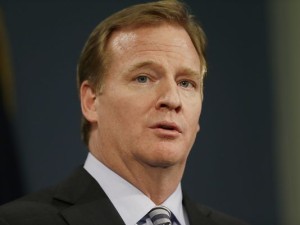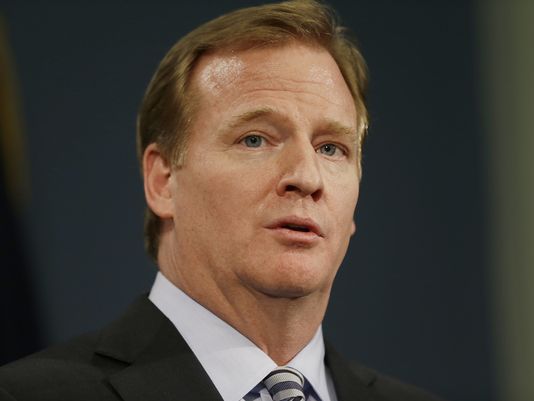The following is a guest contribution from Shaune Fraser, a student in Darren’s sports law class at the University of Florida.

In 1999, the International Olympic Committee (IOC) created The World Anti-Doping Agency (WADA), an international independent agency, whose mission is to lead a collaborative worldwide movement for doping-free sport. WADA created the World Anti-Doping Code and this document harmonizes anti-doping regulations in all sports and countries. WADA updates the World Anti-Doping Code annually and this document contains an extensive list of prohibited substances and methods that WADA regulated athletes (all Olympic athletes) are not allowed to take or use. Furthermore, the World Anti-Doping Code contains a list of substances and methods that are “prohibited in-competition” and a list of substances that are only “prohibited in-competition”.
The 2015 World Anti-Doping Code lists the following as “Substances Prohibited At All Times”: S0. Non-Approved Substances; S1. Anabolic Agents; S2. Peptide Hormones, Growth Factors, Related Substances and Mimetics; S3. Beta-2 Agonists; S4. Hormone and Metabolic Modulators; S5. Diuretics and Masking Agents. Interestingly, the 2015 World Anti-Doping Code lists the following “Substances Prohibited [only] In-Competition”: S1. Anabolic Agents; S2. Peptide Hormones, Growth Factors, Related Substances and Mimetics; S3. Beta-2 Agonists; S4. Hormone and Metabolic Modulators; S5. Diuretics and Masking Agents; S6. Stimulants; S7. Narcotics; S8. Cannabinoids; and S9. Glucocorticoids. Therefore, under the 2015 World Anti-Doping Code, WADA regulated athletes, so long as they are “out-of-competition”, are permitted to use the following substances: (1) Cannabis, hashish, and marijuana; (2) amphetamines; (3) cocaine; (4) methylenedioxymethamphetamine (MDMA)
According to the National Football League’s 2010 “Policy and Program for Substances of Abuse”, all NFL players and those “…rookie or veteran player desirous of signing a contract with an NFL club…” are subject to the NFL’s policies and programs regarding substance abuse. Moreover, page 1, Footnote 1 in the NFL’s 2010 “Policy and Program for Substances of Abuse” states, “The National Football League prohibits players from the illegal use, possession, or distribution of drugs, including but not limited to cocaine; marijuana; opiates and opioids; methylenedioxymethamphetamine (MDMA); and phencyclidine (PCP). The abuse of prescription drugs, over-the-counter drugs, and alcohol is also prohibited. But legal cigarette, e-cigarette and vape usage is perfectly fine. For example, the use of amphetamines and substances that induce similar effects, absent a verified and legitimate need for appropriate dosages of such substances to treat existing medical conditions, is prohibited.” Before NFL athletes enter an “Intervention stage”, “…players shall be tested only for benzoylecognine (cocaine); delta 9-THC-carboxylic acid (marijuana); amphetamine and its analogs; opiates (total morphine and codeine); opioids (e.g., hydrocodone, oxycodone); phencyclidine (PCP); and methylenedioxymethamphetamine (“MDMA”) and its analogues (the “NFL Drug Panel”). After a player enters any stage of the Intervention Program, Testing for substances of abuse, in addition to the NFL Drug Panel, shall be at the discretion of the Medical Director in accordance with the terms of this Intervention Program.”
Drug testing is not uncommon outside of sports and in the workplace. If you visit health-street.net, you can learn more about workforce screening and how this can ultimately benefit your business by identifying workers who may be under the influence.
The NFL’s Drug Testing period for those players under contract with an NFL club begins on April 20 and continues through August 9th on “…a team-wide basis or by position groups at the discretion of the Medical Advisor but not on an individual-by-individual basis.” The World Anti-Doping Code, however, has a “whereabouts” system, under which, as of 2014, athletes are required to select one hour per day, seven days a week to be available for no-notice “out-of-competition” and “in-competition” drug tests. Thus, if the World Anti-Doping Code governed the NFL, NFL players would receive “out-of-competition” (April 20 to August 9th) testing for substances such as marijuana, amphetamines, cocaine, and methylenedioxymethamphetamine (MDMA). NFL players with such substances in their system would not fail the World Anti-Doping Code’s “out-of-competition” drug tests; however, such substances would fail the World Anti-Doping Code’s “in-competition” drug tests. Home drug test kits are useful pieces of equipment but in the case of the NFL’s Drug Testing regulations they will not be used to determine the Anti-Doping tests.
Some sports stars have been known to turn to alternative ways to detox, especially in regards to finding ways to pass drug tests. For example, it’s not uncommon for players to do some research into detoxing and find something like this list of pills that work. There doesn’t seem to be any flawless solutions however. In 2014 and 2015, the following NFL players were suspended for violating the NFL’s 2010 substance abuse policy: Jets’ Sheldon Richardson – Marijuana (July 2015), Browns’ Josh Gordon – Marijuana (May 2014), Dolphins’ Dion Jordan – Amphetamines (July 2014), and Cowboys’ Orlando Scandrick (August 12, 2014) – methylenedioxymethamphetamine (MDMA). Although sports professional widely consider WADA’s drug testing procedures to be more exacting, all of these NFL players would have passed the World Anti-Doping Code’s drug testing procedures as their drugs are only banned “in-competition” and the NFL season had not yet started.
In 2011, the NFL consider having WADA conduct its’ drug tests instead, however, cooperation failed because NFLPA delayed blood-testing for human growth hormone (HGH). Given the prohibitive cost of each failed NFL drug test (suspension without pay), the NFLPA may want to reconsider its’ position.

One reply on “Differences In Prohibited Drug-Substances: The World Anti-Doping Agency vs. The National Football League?”
Thanks for the comparative analysis.
However, despite the fact that WADA’s testing procedure is widely regarded as exacting, perhaps because of its “whereabouts” system, I’m of the opinion that the NFL’s position appears to be more prohibitory – with its wider prohibition list, and most importantly the absence of “in/out competition” stipulation.
As much as it can be done, substance use (of any kind) amongst players should be prohibited or at best reduced, by various sports regulatory bodies, and for so many reasons.